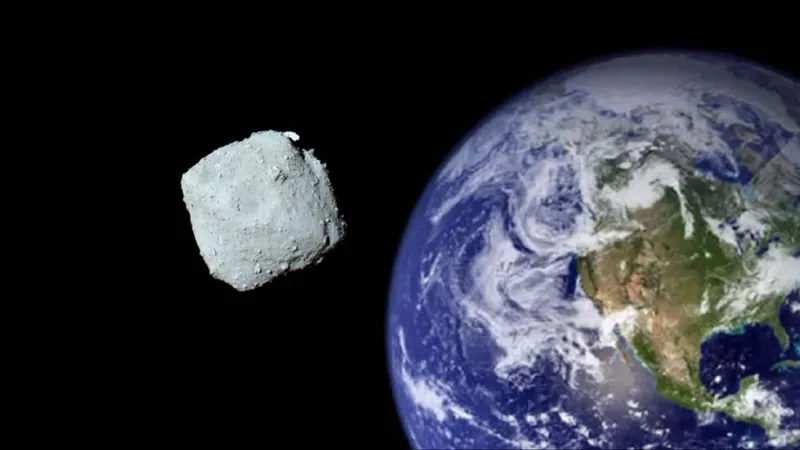
Is Earth’s Temporary ‘Mini-Moon’ a Lost Fragment of the Moon? The Fascinating Discovery Revealed!
2025-01-28
Author: Rajesh
A Fascinating Discovery
A recent astronomical find has sparked intriguing discussions among researchers: the asteroid 2024 PT5, first detected on August 7, 2024, by the NASA-funded Asteroid Terrestrial-impact Last Alert System (ATLAS) observatory in South Africa, may actually be a lost fragment of our very own Moon!
Unique Orbit
This small celestial object exhibits an orbit around the Sun that closely mimics Earth’s, leading scientists to theorize that it originated from our corner of the solar system. Contrary to early expectations that 2024 PT5 would become a temporary mini-moon, research indicates that it follows a unique horseshoe orbit, coming close to our planet without fully entering into Earth’s orbit.
Researchers’ Insights
Dr. Teddy Kareta, a postdoctoral associate at Lowell Observatory in Arizona, has clarified that while the asteroid did not physically orbit Earth, its trajectory was significantly influenced by a close encounter with the Earth-Moon system. He noted that this type of orbit is rare, lacking a specific term due to its distinct nature.
Fascinating Observations
The research team made fascinating observations of the asteroid. The way sunlight reflects off 2024 PT5 suggests it shares characteristics with lunar rocks, indicating a composition rich in silicate minerals not typically found in asteroids but prevalent in lunar samples. Dr. Kareta commented on the asteroid's youthful appearance, remarking, "It looks like it hasn't been in space for very long, maybe just a few thousand years or so." This observation reinforces the hypothesis that 2024 PT5 could be of lunar origin and offers valuable insights into the emerging population of lunar asteroids.
Rigorous Analysis
To confirm that 2024 PT5 wasn't merely space debris, the team analyzed its movements rigorously. Scientists at NASA's Center for Near Earth Object Studies (CNEOS) determined that the asteroid's dynamics were more consistent with that of a space rock rather than discarded spacecraft or other human-made materials. Study co-author Oscar Fuentes-Munoz, a postdoctoral fellow at NASA’s Jet Propulsion Laboratory, highlighted that the asteroid's movement suggests a density much greater than typical space junk.
Compelling Arguments
Renowned solar system specialist Robert Jedicke from the University of Hawaii's Institute for Astronomy finds the argument supporting 2024 PT5’s lunar origin compelling, asserting that the researchers have conducted thorough analyses of all plausible origins. He pointed out that it is indeed likely for rocks dislodged from the Moon by asteroid or comet impacts to evolve into these curious orbits.
Broader Significance
In light of these findings, scientists are not only learning more about 2024 PT5 but are also uncovering the broader significance of lunar asteroids. The implications of such objects could enhance our understanding of the Moon’s history and the interactions within our solar system. Stay tuned as researchers continue to delve into this celestial mystery that brings us one step closer to understanding the fascinating dynamics of our cosmic neighborhood!



 Brasil (PT)
Brasil (PT)
 Canada (EN)
Canada (EN)
 Chile (ES)
Chile (ES)
 Česko (CS)
Česko (CS)
 대한민국 (KO)
대한민국 (KO)
 España (ES)
España (ES)
 France (FR)
France (FR)
 Hong Kong (EN)
Hong Kong (EN)
 Italia (IT)
Italia (IT)
 日本 (JA)
日本 (JA)
 Magyarország (HU)
Magyarország (HU)
 Norge (NO)
Norge (NO)
 Polska (PL)
Polska (PL)
 Schweiz (DE)
Schweiz (DE)
 Singapore (EN)
Singapore (EN)
 Sverige (SV)
Sverige (SV)
 Suomi (FI)
Suomi (FI)
 Türkiye (TR)
Türkiye (TR)